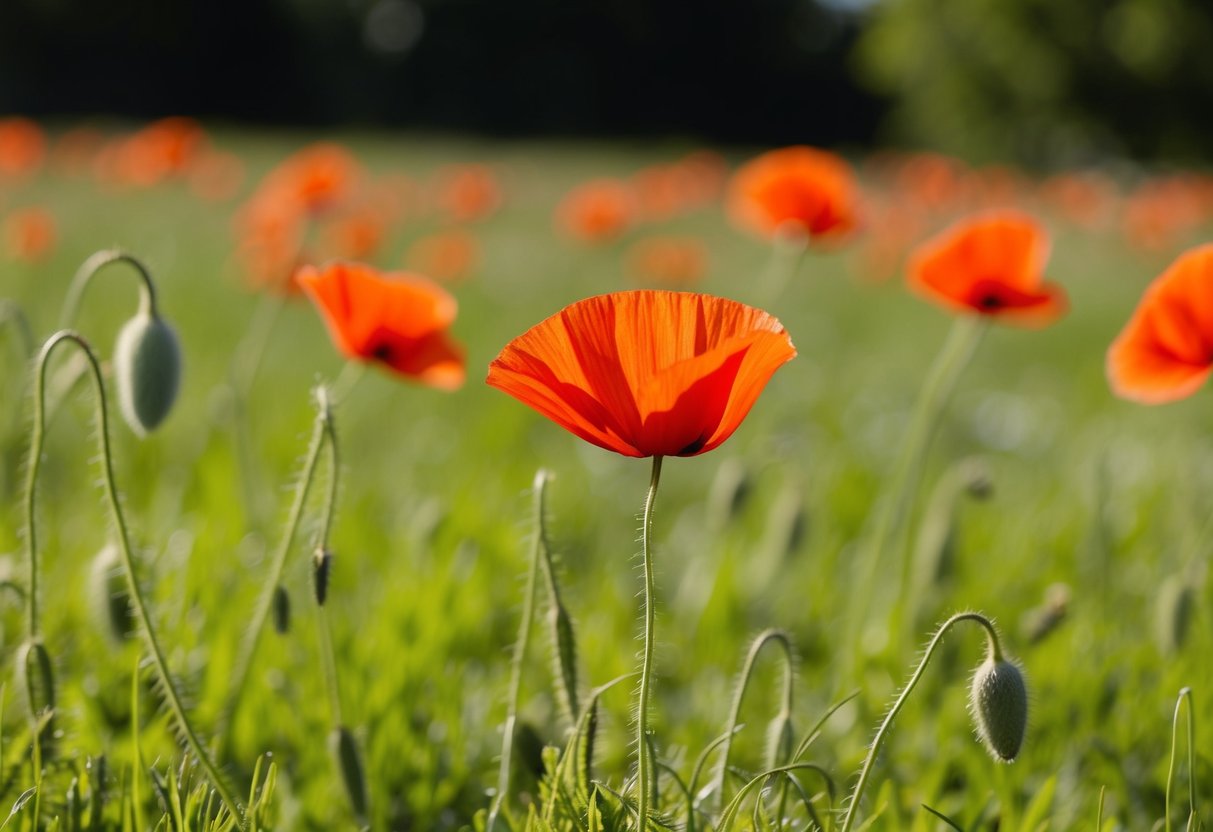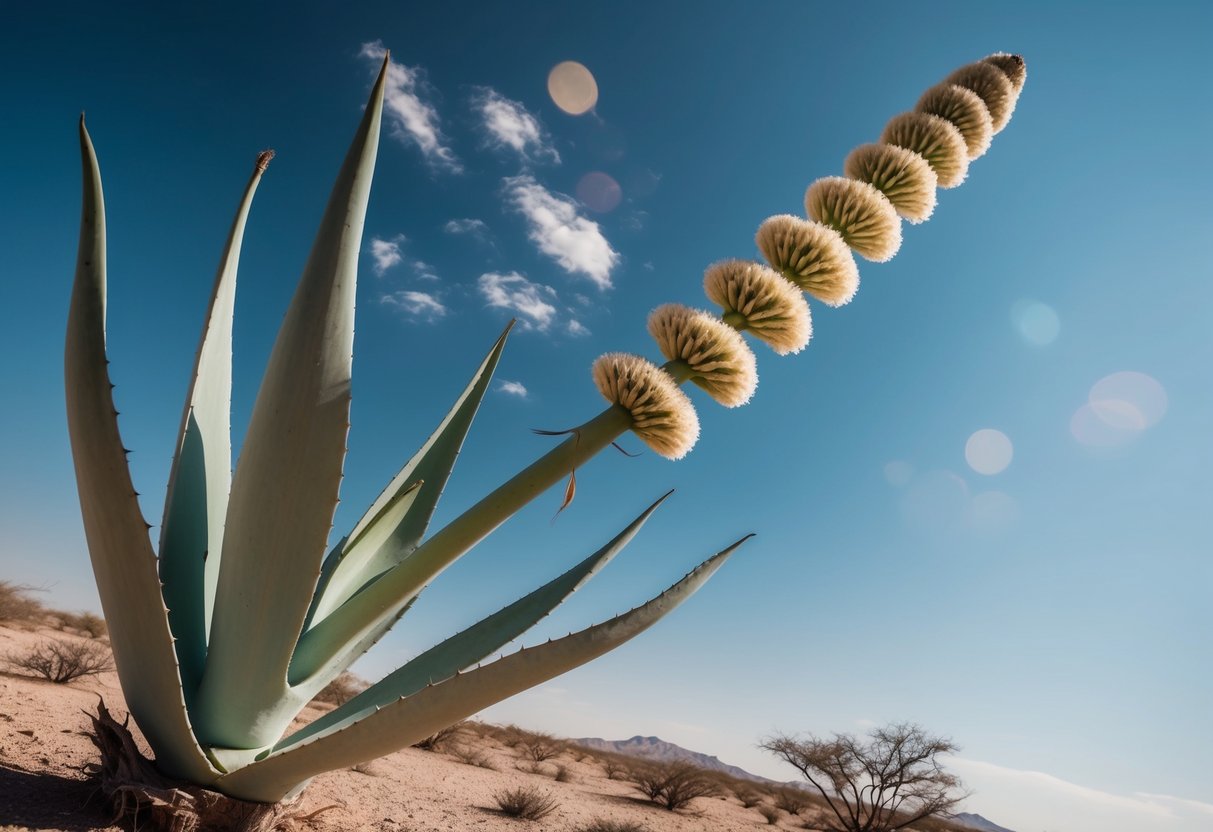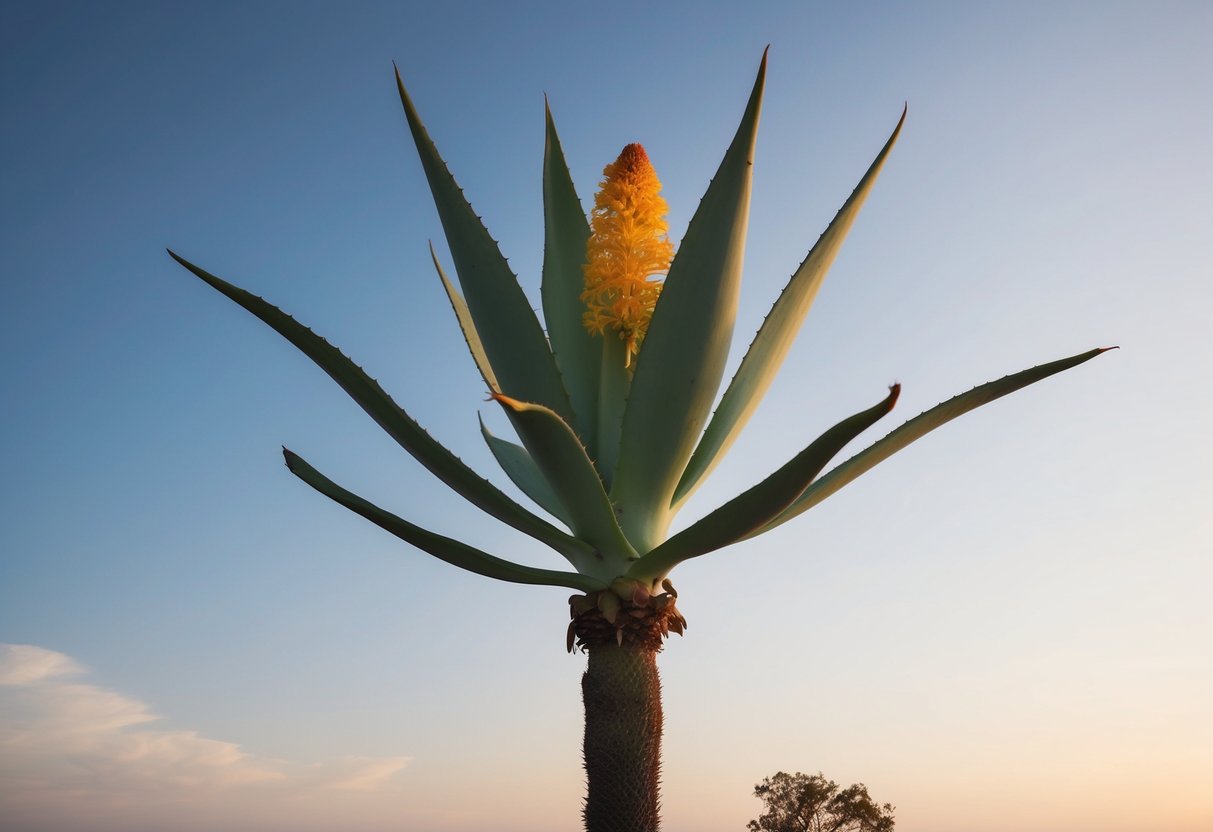What Flower Blooms Once and Then Dies? Exploring Nature’s Unique Wonders
Imagine a plant that spends years growing, only to bloom once and then say goodbye to life as you know it. This is exactly what some fascinating flowers do, capturing our curiosity with their peculiar cycle. Each one has its own unique charm, making them a stunning and mysterious part of nature.

One striking example is the Agave Americana, often called the Century Plant. Despite its nickname, it blooms only once in its life—typically after several decades. Once the towering stalk has flowered, the plant dies, leaving behind new offsets to continue its legacy. Nature’s plan carries forward, creating an ongoing cycle of life.
You might also be intrigued by the Puya chilensis, a Chilean native. This plant can take up to 11 years to bloom, showing its green-yellow flowers just once. Such plants remind us how rare moments can make a lasting impact.
The Life Cycle of Monocarpic Plants

Monocarpic plants bloom just once in their lifetime and then die. These plants dedicate all their energy to this single flowering event. You might find this life cycle fascinating as it contrasts with other plants that bloom multiple times.
Defining a Monocarpic Plant
Monocarpic plants are unique because they flower and set seeds once before dying. The term “monocarpic” combines two Greek words: “mono,” meaning single, and “karpos,” meaning fruit or grain. This describes their single reproductive event during their entire life span.
Some common examples are certain types of bamboo and the famous Queen of the Andes. Bamboo, for example, may take many years to flower, but once it does, the main plant dies, though it often leaves behind new shoots to continue growing. These plants put all their energy into producing seeds, which ensures that their species survives even after they perish. It’s a fascinating and dramatic life cycle that continuously renews itself.
Common Characteristics
Monocarpic plants share several traits. They usually have a long vegetative phase, during which they store energy. When the right conditions are met, they shift focus towards flowering. At this stage, they channel energy into producing a single, large bloom or a group of flowers.
After flowering, the plant places its remaining resources into seed production. This ensures successful propagation. As the main plant dies, they leave behind offshoots or seeds that can grow into new plants and continue the cycle. Their impressive blooms attract pollinators, and the abundance of seeds ensures some will survive to mature.
Perennials, which flower multiple times, provide a contrasting approach, balancing growth and reproduction over many years. In contrast, monocarpic plants put all their efforts into one grand display.
The Agave Americana: A Case Study

Agave Americana, often called the Century Plant, is fascinating for its unique life cycle where it blooms just once before dying. In this section, you’ll learn about its origins, its cultural significance in Mexico, and the fascinating process leading to its single bloom.
Geographic Origins
The Agave Americana is native to the hot and arid regions of Mexico. This plant is well-suited to the dry, sun-bathed environments, typically thriving on rocky hillsides. You can also find it in the American Southwest, thanks to its migration and cultivation by people. The plant’s spiky appearance comes from its adaptation to withstand these harsh climates.
Agave America’s adaptability allows it to flourish in different regions worldwide. Despite being originally from Mexico, you might see it in gardens far from its homeland due to its aesthetic appeal. Its ability to store water in its thick leaves helps it survive in areas with little rainfall. This resilience is a key aspect of its successful distribution outside its native range.
Cultural Significance in Mexico
In Mexico, the Agave Americana holds deep cultural significance. Known locally as the “maguey,” it’s been integral to daily life for centuries. It’s used in the production of pulque, a traditional alcoholic beverage, and its fibers are woven into ropes and mats. The spiritual importance is evident in its presence in various myths and rituals.
The Century Plant represents aspects of life and death, given its unique life cycle. Mexican art, literature, and festivals often celebrate this plant, underscoring its deep-rooted connection to the nation’s identity. Its symbolism extends to resilience and transformation, reflecting how people in the region have adapted and thrived throughout history.
Growth and Blooming Process
The Agave Americana’s life cycle is a spectacle. You will notice that it grows for several decades without flowering. During this time, it accumulates energy and enlarges its rosette of leaves. When it finally blooms, usually after several years, it sends up a tall flowering stalk that can reach impressive heights, sometimes over 20 feet.
This blooming marks the plant’s final chapter. The Century Plant uses all its reserved energy to produce a stunning display of flowers. Once the flowering is complete, the plant dies, but it leaves behind seeds to begin a new generation. This cycle of growth, bloom, and death is a remarkable testament to nature’s beauty and resilience.
Bromeliads: Beauty and Diversity

Bromeliads are fascinating plants known for their striking appearance and variety. They are popular both in the wild and as houseplants, offering unique beauty and adaptability to different environments.
Characteristics of Bromeliads
Bromeliads are diverse in size, color, and shape. Most have vibrant flowers that bloom only once but leave behind pups, or offsets. These pups can be separated and grown into new plants, allowing the bromeliad to live on.
The leaves of bromeliads form a central cup that captures water. This helps them thrive in diverse conditions. Some have spiky leaves, while others are smooth and soft to the touch. Light preferences vary, with some enjoying bright, indirect light, and others preferring shaded areas. Water needs depend on the species, but generally, they should be watered when the substrate feels dry.
Bromeliads in Domestic Settings
Bromeliads make excellent indoor plants due to their minimal care requirements and eye-catching appeal. They can be placed in various rooms, adding a touch of color and tropical flair to your home. These houseplants do well in containers, making them suitable for small spaces.
You should provide bright, indirect light and maintain warm temperatures for optimal growth. Regular feeding of diluted liquid fertilizer encourages healthy development. If the leaves become droopy or dark green, this may indicate a need for more light. You can find more details on dealing with such issues in this guide. Watering should be done every one to two weeks by pouring lukewarm water directly into the plant’s cup. With proper care, bromeliads can thrive indoors, bringing beauty and diversity to your space.
Monocarpic Bamboo Species
Bamboo is fascinating because some species only flower once in their lifetime and then die. This unique life cycle has dramatic implications for ecosystems where these bamboos grow.
Unique Blooming Cycle
Monocarpic bamboo species, like the Phyllostachys nigra var. henonis, have a rare and intriguing blooming cycle. Often, these bamboos flower simultaneously across vast regions. In this cycle, the majority of the plant’s energy is spent on flowering rather than regular growth.
For some species, like black bamboo, the flowering cycle can range from 60 to 120 years. After this event, the plants die, leaving a large number of seeds that grow into the next generation. This can create an uneven population age, where most plants in a region are young at the same time. It’s a fascinating natural process but can also lead to challenges such as food shortages for animals that rely on bamboo.
Bamboo’s Role in Ecosystems
In ecosystems, bamboo plays a crucial role. It provides food and shelter for wildlife, like pandas which depend heavily on bamboo for sustenance. During the flowering event, food can become scarce, affecting animals that rely on it.
Additionally, the mass die-off of bamboo after flowering can influence the ecosystem’s balance. When bamboo dies, the decomposing material can enrich the soil, beneficial for other plants. Yet, this process also opens space for new plants, leading to potential changes in plant diversity. So, while bamboo’s life cycle may seem simple, its impact on ecosystems is significant and complex.
Cultivating Monocarpic Plants

Monocarpic plants, also known as “death bloom” plants, flower once in their lifetime and then die. Creating the right environment and providing proper care will ensure these plants thrive and reproduce through offsets.
Choosing the Right Environment
When choosing an environment for monocarpic plants, it’s crucial to provide plenty of sunlight. These plants usually thrive in bright, indirect light, making them great houseplants. Ensure they have well-draining soil to prevent waterlogging.
Most monocarpic plants prefer warm temperatures. Keep them away from cold drafts or areas that get too chilly. Adequate spacing is important, as the plants need room to spread their offsets or pups.
Consider pots with drainage holes and a good mix of soil and sand. This setup ensures optimal growth. The right environment mimics their natural conditions, so research specific needs for the type of monocarpic plant you have.
Long-Term Care and Management
Regular watering is essential, but be careful not to overwater. Most monocarpic plants need moderate watering, especially during their growing season. Once they’ve bloomed, the main plant will die, but the offsets will continue to grow.
Fertilize sparingly during the growing season to encourage healthy blooms. A balanced, diluted fertilizer every few weeks can be beneficial.
Pruning is not usually necessary, but removing dead leaves or rosettes can help keep the plant looking tidy.
Propagation through offsets is common with monocarpics like Aeoniums. These “pups” can be planted separately to start new plants. By understanding these care tips, you can enjoy and share the unique lifecycle of monocarpic plants.







